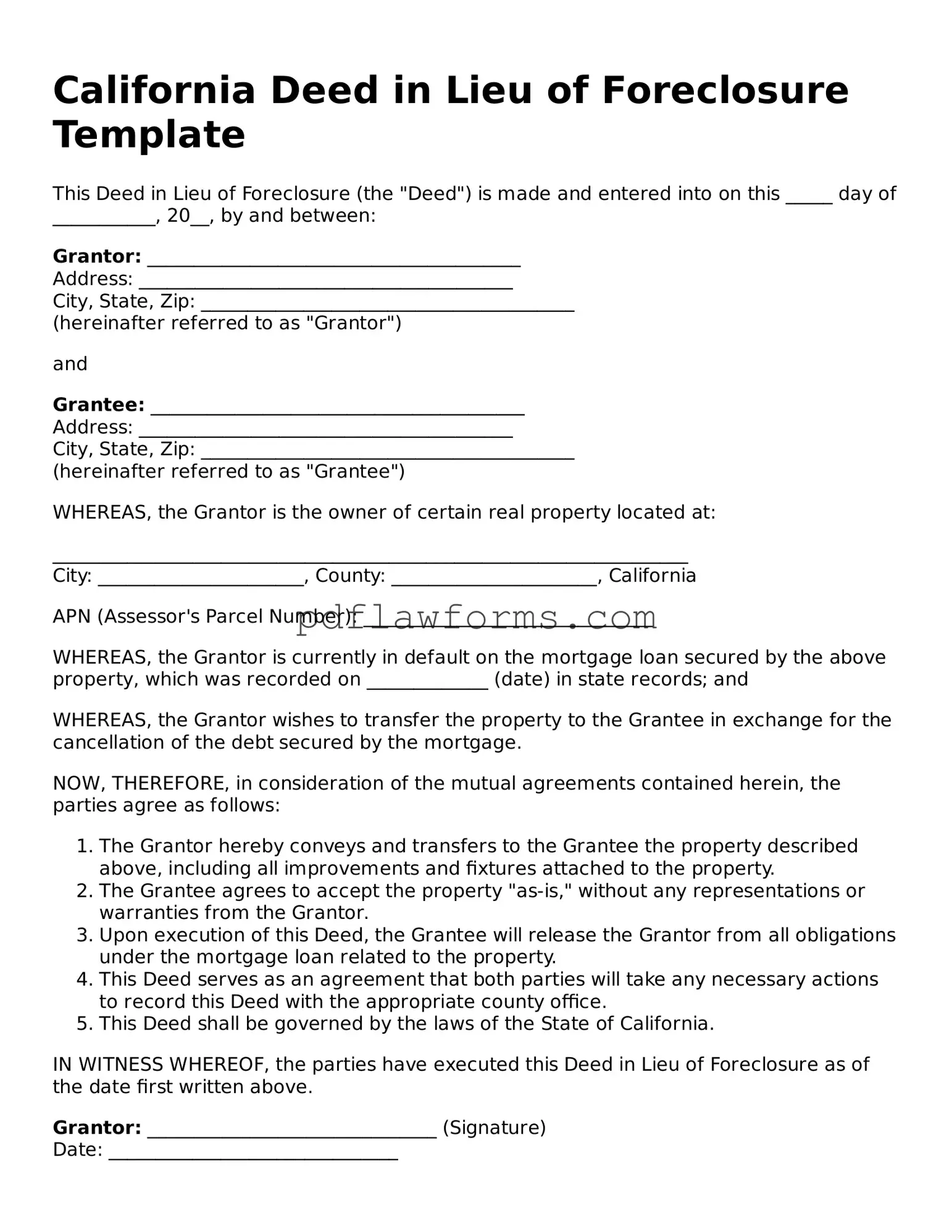Deed in Lieu of Foreclosure Form for the State of California
A Deed in Lieu of Foreclosure is a legal document that allows a homeowner to voluntarily transfer their property to the lender to avoid the lengthy and costly foreclosure process. This option can provide a fresh start for homeowners facing financial difficulties, as it often leads to a quicker resolution and can help mitigate damage to their credit. If you're considering this option, take the first step by filling out the form below.
Make My Document Online
